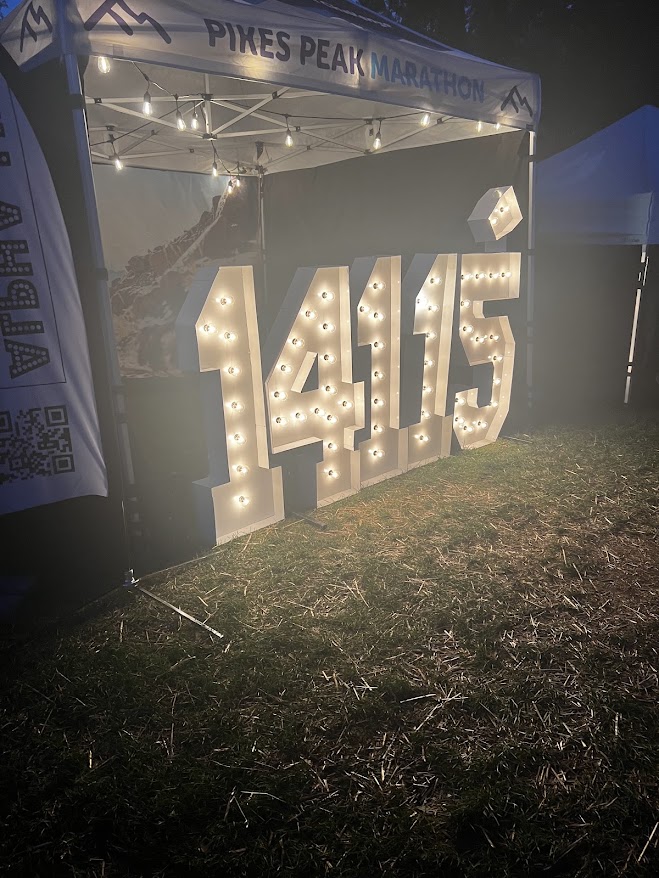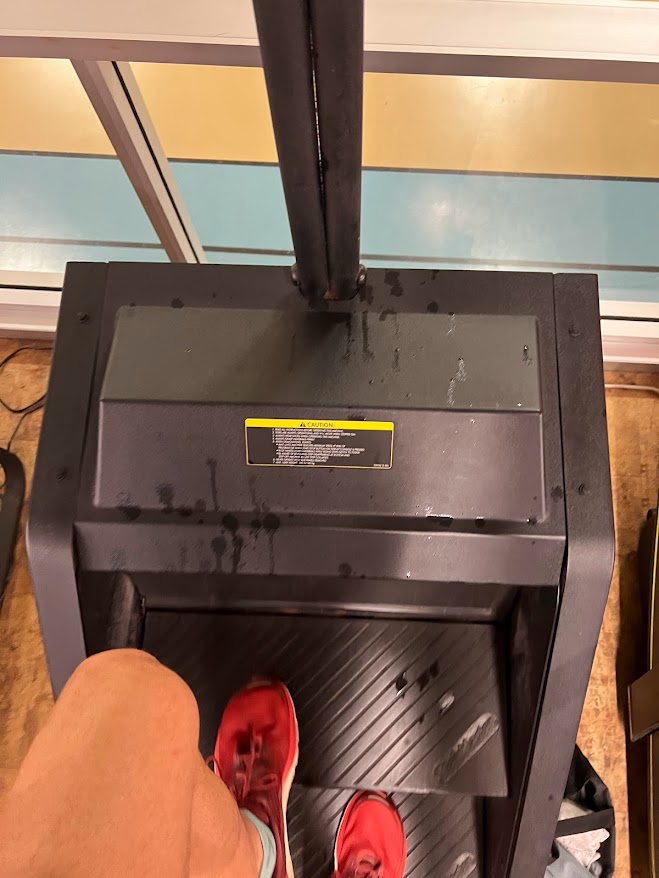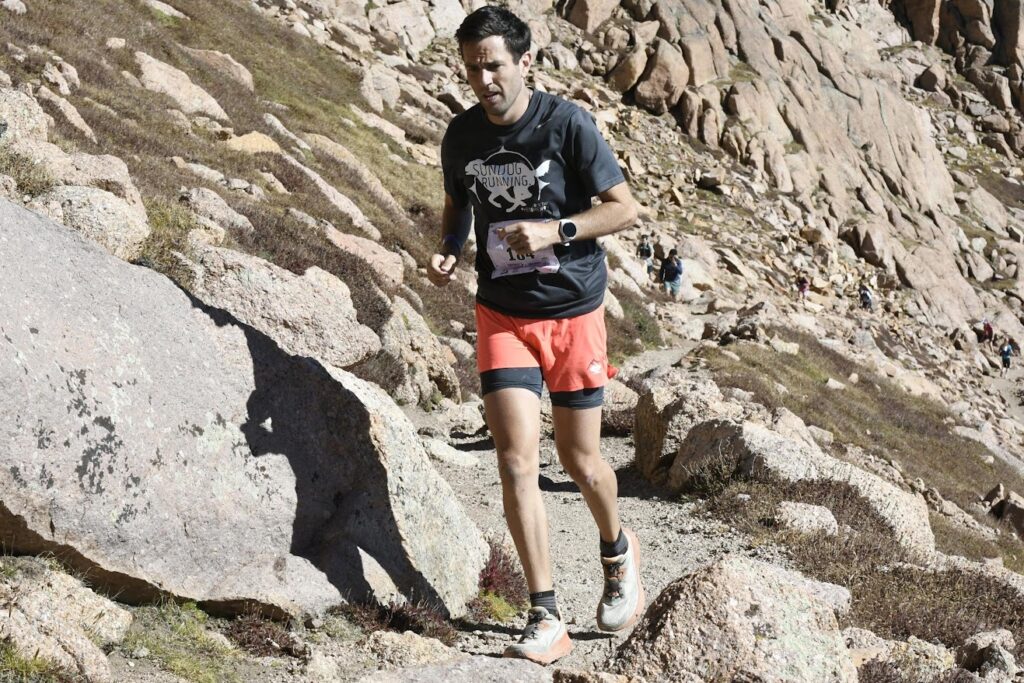Training for the Pikes Peak Marathon When You Don’t Live Near Mountains
You don’t need to live at altitude or have access to big climbs outside your back door to train for Pikes Peak. Most race participants don’t! But with the right strategy, consistency, and a little creativity, you can effectively train for Pikes Peak from wherever you are!
I’m Coach Will Baldwin, from SunDog Running, the official coaching partner for the Pikes Peak Marathon. Every year we help road runners, trail runners, first timers, and returning athletes get ready for this brutal and beautiful challenge. From altitude, climbing, terrain and fueling, there’s a lot to consider. Let’s jump into how to train smart so you feel confident and ready when race day comes around.
Table of Contents
When planning your training, remember to include long runs that simulate the terrain and challenges you’ll face as you train for Pikes Peak.
Altitude is real, here’s how to prepare
Pikes Peak is really high. It starts at almost 7,000 feet and tops out over 14,000 feet. No one is altitude-proof, even the best athletes in the world can feel it up there. But there are some things you can do to manage the stress of high altitude.
Focusing on strength exercises is crucial to train for Pikes Peak effectively.
To truly prepare and train for Pikes Peak, focus on your overall fitness and strength training.
While altitude masks may seem like a solution, the best way to train for Pikes Peak is to elevate your overall fitness.
Adapting your arrival strategy for race day can be part of your plan to prepare for Pikes Peak as well.
Overall fitness is your best defense
The most significant thing you can do to prepare for high altitude is simple: get fit. Starting earlier and increasing overall training volume (get those miles in!) are the most impactful ways you can help your body perform at high altitude.
Prior to this race each year, I usually receive a few questions about altitude masks. Although they can make your lungs stronger, I don’t believe incorporating them into your training will significantly reduce the impact of high altitude. Since they make training more intense, they can also decrease your time spent training, which can be counterproductive to overall fitness goals.
Timing of arrival: pros and cons

Incorporating climbing into your training program is essential for those who want to train for the Pikes Peak Marathon and Ascent.
Another common question around altitude is “When is the best time to fly (or drive) in?”.
Many participants arrive close to race day due to logistical reasons. Some show up at this time hoping the effects of altitude don’t hit them until after the race. Although this may work for some, others feel the effects right away.
Other participants come a week or two early to give themselves time to acclimate. Giving yourself time to do a few runs up high can improve your mental state and preparedness, but it can also wear you down if you don’t respond well to altitude. The extra time can provide logistical and scouting benefits, but likely won’t make a significant difference in adjusting to the altitude, as that generally takes a longer time period.
Whether your strategy is to show up close to race day or arrive ahead of time, there are pros and cons. So don’t stress if one or the other works best with your schedule.
Remember, the more specific your training to simulate the race, the better prepared you’ll be.
Fueling for success
How you fuel your body before and during the race is another factor that can greatly impact how you handle the altitude. If you get behind on carbs, fluids, and electrolytes, everything starts to unravel. Create a fueling plan ahead of time that focuses on getting at least 60g of carbohydrates per hour and staying on top of hydration and electrolytes during the race.
Simulate the climb, even if you don’t have one
Pikes is steep, and it’s long.The grade averages around 11%, and most runners are climbing for several hours. It can be hard on your calves, achilles, lower back and hip flexors. Getting your body used to being in climbing position helps you stay relaxed, avoid injury, and move efficiently on race day. The biggest mistake I see is people hammering these sessions too hard early on. It’s better to go easy for a longer period than to destroy yourself in 20 minutes and be toast the rest of the week. You’re going to be climbing for hours on race day, so the goal is to accumulate time, consistently, week after week.
Equipment to use: treadmills and stair climbers
Start with one day per week to focus on vertical-specific training. If you have access to a stair climber or incline treadmill, either one will get the job done. As you progress in your training, work up to vertical training two or three days per week.

Each of these movements prepares you for what you’ll face when you train for Pikes Peak.
On the treadmill, the focus should be on incline, not pace. Increase the incline as steep as you can while still jogging — the goal is to accumulate minutes climbing. If you can hold a jog at 6-8% incline, that’s great. Over time, push the incline higher. Same idea on the stair climber: steady, consistent climbing with a zone 2 feel (about a 5 out of 10 effort). The more you can stack up 45–60 minute sessions, the better you’ll feel when the race hits.
Outdoor training: find the right grades to train on
The race has a mix of grades, mostly in the 7–14% range, so I always encourage runners to scout routes with sections that mimic that climb. Look for a trail or climb near you with that kind of steepness even if only for a short section. Hit it a couple times and repeat sections. Get creative with loops. Use Strava, AllTrails, and local running groups to find routes that have the kind of climbing you need.

When you embrace the process, you’ll find joy in every step of your journey to train for Pikes Peak.
Strength and movement prep for Pikes Peak
Strength training is essential. Running up Pikes Peak is similar to doing a single-leg, weighted step-up workout for hours. If your back, calves, or hip flexors aren’t ready, you’re going to feel it — probably before you even get to treeline.
The good news? You don’t need a gym membership or a complicated plan, just a few key movements and a little consistency.
My favorite strength movements
Calf raises
Effective, simple and one of my all-time favorites.
This movement mimics the climbing you’ll do during the race. Look for a box or step that’s knee-height or lower and strive for a deep stretch and a strong press. It doesn’t take much weight, but doing them consistently on one leg builds the kind of strength that saves you on race day.
Start by standing straight and bracing your core muscles. Then take a giant step backwards with your foot. Bend your opposite knee until it’s at 90°, and lower your rear knee until it is also bent at a right angle. Then push back up and return to the starting position. Once you can perform greater than 15 reps/side for all sets progress by adding 10% of your body weight.
As you build strength, remember that strength and movement prep will help you train for Pikes Peak.
Completing these strength movements regularly will also help you train for Pikes Peak effectively.
Make it simple and trackable
You don’t need a complicated routine or a new YouTube video every week. Pick 2-3 movements, do them well, and track your progress. How many single-leg calf raises can you do per side? How much weight can you safely build up on a reverse lunge for 8 reps?
Check in at the start, then again in a month, then again in two or three months. If your numbers go up and your running stays consistent, you’re going to feel the difference on race day.
Bonus tip: if you’ve got someone to do strength with (a buddy, a spouse, a run group), it makes a big difference. Hold each other accountable. It’s easy to skip strength, but it’s harder when someone else is showing up too.
Above all, remember to enjoy the journey as you train for Pikes Peak this race season!
You Don’t Need the Perfect Mountain — You Just Need a Plan
I’ve coached runners from sea level, flat cities, and treadmill-only setups who went on to crush Pikes — and not just finish it, but enjoy it. If you’re consistent and willing to get creative, you’ll get stronger, more comfortable on the climbs, and more confident heading into race day.
Use the below sample training plan when you’re already in the bulk of training but at least over a month away from race day. Stay consistent, listen to your body, and adapt workouts as needed. You’ve got this! 🏔️👟✨
🏔️ Pikes Peak Ascent Training Plan 🏃♂️
| Week 1 | Week 2 | Week 3 |
| Day 1: 50-min Easy Run | Day 1: 50-min Easy Run or Rest | Day 1: Rest |
| Day 2: 30-min Stepping + Prehab Strength | Day 2: FLEX DAY (Easy Run, Walk, Cross-train, or Rest) | Day 2: 30-min Stepping |
| Day 3: Hill Repeats (6×20 sec) | Day 3: 50-min Easy Run | Day 3: Hill Repeats (10×45 sec) |
| Day 4: Threshold (15×1 min) | Day 4: Combo Session (Intervals & Threshold) | Day 4: 70-min Easy Run |
| Day 5: 30-min Stepping | Day 5: 60-min Easy Run + Prehab Strength | Day 5: 30-min Stepping |
| Day 6: FLEX DAY + Prehab Strength | Day 6: FLEX DAY | Day 6: Rest |
| Day 7: 2-hour Long Hilly Run | Day 7: 60-min Easy Run + 60-min Stepping | Day 7: 3-hour Long Hilly Run |
Use this sample training plan and adapt it as necessary to meet your needs to train for Pikes Peak.
Quick Takeaways:
- You can effectively train for Pikes Peak from wherever you live
- The most significant thing you can do to prepare for altitude is to increase your overall fitness (get in those miles!)
- Plan ahead to ensure you fuel for success
- Focus on longer workouts on treadmills or stair climbers to get your body used to being in climbing position
- Complement these climbs with outdoor routes that have similar grade to the race, even if only for short sections
- Track progress on consistent, simple strength training exercises such as calf raises, weighted step-ups and reverse lunges
- Stay consistent, listen to your body and adapt workouts as needed
If you’re racing Pikes this year and you’re unsure of where to start or looking for more structure, check out www.runbaldwin.com for additional training plans built specifically for this course including incline workouts, fueling guidance, strength programming, and race-week strategy. If you’d like to connect, email me at willbaldwinok@gmail.com and I’m happy to help however I can!



